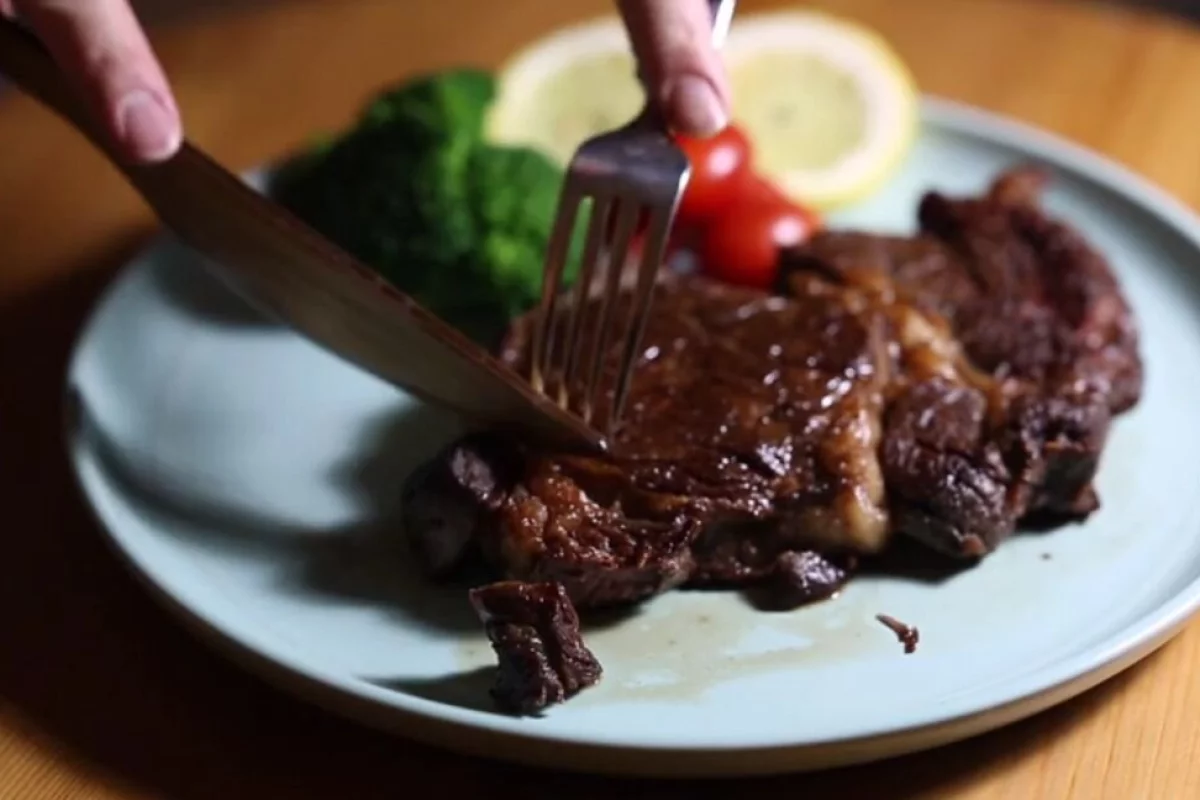
Posted on 10/22/2021 12:08:18 PM PDT by Red Badger

A steak knife made from a new form of hard wood was able to slice through meat with easeBo Chen VIEW 1 IMAGES --------------------------------------------------------------------------
By experimenting with alternative methods of wood processing, scientists have come up with a new hardened form of the natural material that can be fashioned into sharp knives and sturdy nails. The team reports the resulting knives are nearly three times sharper than a standard dinner table knife, and can even be thrown into the dishwasher after use.
This hardy new form of wood is the handiwork of scientists at the University of Maryland, who set out to supercharge the material's natural strength, which lies in the cellulose packed inside. Cellulose is the primary component of wood, accounting for 40 to 50 percent of the material, and itself has a higher strength-to-density ratio than many engineered materials, including ceramics, metals and polymers.
But the remainder of wood, made up of the binding materials hemicellulose and lignin, dilutes its overall strength and limits its applications. The authors of the study set out remove these weaker parts of the wood while preserving the cellulose structures.
“It’s a two-step process,” says senior author Teng Li. “In the first step, we partially delignify wood. Typically, wood is very rigid, but after removal of the lignin, it becomes soft, flexible, and somewhat squishy. In the second step, we do a hot press by applying pressure and heat to the chemically processed wood to densify and remove the water.”
The hardened wood was then carved into a knife and coated in mineral oil, which counters the natural tendency of cellulose to absorb water, extending the lifespan of the material, preserving the blade's sharpness and making it dishwasher safe. According to the team, the hard wood knife is almost three times sharper than a stainless steel dinner table knife and is 23 times times harder than natural wood. It was used to cut through a medium-well done steak with ease.
“The strength of a piece of material is very sensitive to the size and density of defects, like voids, channels, or pits,” says Li. “The two-step process we are using to process the natural wood significantly reduces or removes the defects in natural wood, so those channels to transport water or other nutrients in the tree are almost gone.”
Separately, the team used its new hard wood to produce nails, which were not only rust-resistant but just as sharp as regular steel nails. The scientists demonstrated this by using their wooden nails to hammer together three wooden boards, which they did without inflicting any damage on the nails.
The scientists hope this new form of wood can come to offer an eco-friendly alternative to steel and ceramics, which need to be forged in furnaces at extreme temperatures. More research will be needed to ascertain exactly how energy efficient the production process is, but the scientists are optimistic about the ultra-hard wood's potential.
“In our kitchen, we have many wood pieces that we use for a very long time, like a cutting board, chopsticks, or a rolling pin,” says Li. “These knives, too, can be used many times if you resurface them, sharpen them, and perform the same regular upkeep.”
The research was published in the journal Matter.
Source: Cell Press via EurekAlert
The game of Rock, Scissors, Paper is now obsolete.
I could buy that it starts out sharp, but how durable is it over time?
Can they make a machete with it?
Afghan refugees rejoice.
LOL!!..................................
Is this to use on the bugs we have to eat in the future?
Every dinner table will have a piece of sandpaper, now.
Is it dishwasher safe?
All the billboards in Arkansas can now add walnut knives to walnut bowls.
The bad guys will get them into schools and airplanes with ease.
Can it be made into a firing pin?
“It slices, it dices...it even makes Julienne fries!”
And mounds of coleslaw!.......................
Better keep them away from Alec Baldwin.
To make the plastic “ cellulose acetate”, wood pulp that has low hemicellulose and minimal residual lignins is then dissolved in caustic acid. Similar process.
Does it burn? Can you make an Abrams tank out of it?
It may start out that way, but it won’t last very long
Disclaimer: Opinions posted on Free Republic are those of the individual posters and do not necessarily represent the opinion of Free Republic or its management. All materials posted herein are protected by copyright law and the exemption for fair use of copyrighted works.